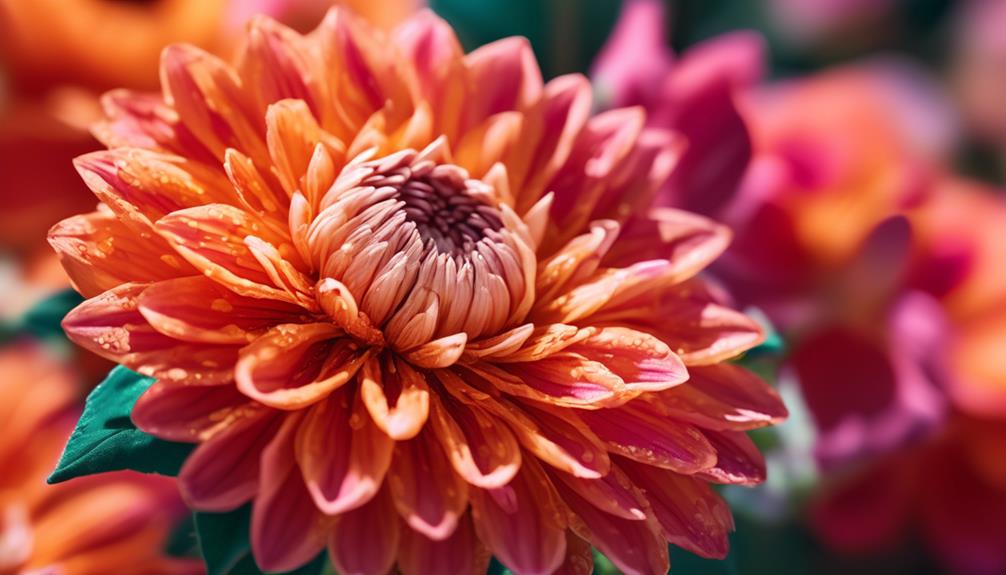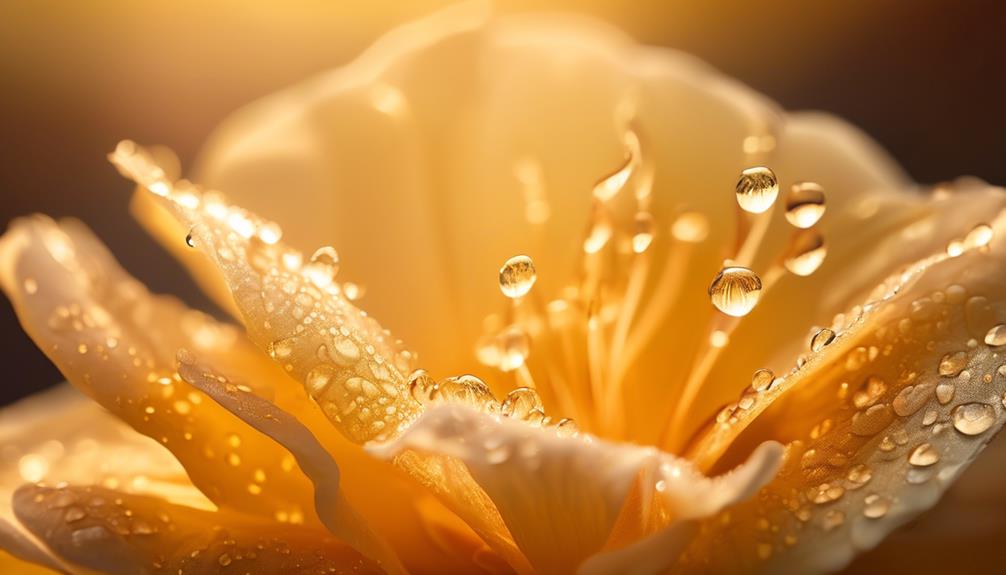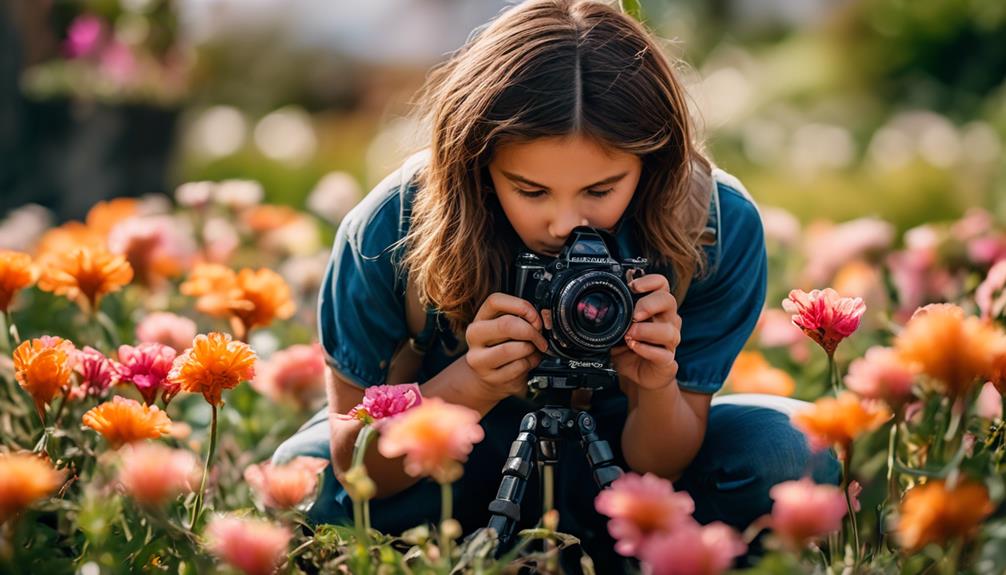Please note this post may contain affiliate links picked by me (Jay) that I have deemed may be of interest or relevant to you the reader of this.
These links do not affect the cost of the thing if you decide to purchase but i may get a little money if you choose to purchase.
For more information on my affiliate link policy click here.
As I held my camera in my hands, I realized that there was a whole new world waiting to be discovered. Little did I know that beneath the surface of everyday objects lay intricate details and hidden beauty, just waiting to be captured through the lens.
Macro photography, the art of capturing close-up shots, was a realm I had yet to explore fully. Curiosity piqued, I embarked on a journey to uncover the secrets of this fascinating genre.
Little did I know that there were seven beginner tips that would forever change the way I approached macro photography. With each tip, a new door opened, revealing a world of possibilities and unlocking the potential within each shot.
So, if you're ready to take your macro photography skills to the next level, join me as we uncover these invaluable beginner tips together.
Key Takeaways
- Choosing the right macro lens or using extension tubes can greatly enhance your macro photography capabilities.
- Lighting techniques such as diffusing light and using reflectors can help create softer illumination and control the direction and intensity of light.
- Selecting subjects with interesting textures, patterns, and vibrant colors can make your macro shots more visually appealing.
- Adjusting aperture, using focus stacking, and experimenting with different distances and magnifications can help you achieve the desired depth of field in your macro photography.
Camera Equipment Essentials
When diving into the captivating world of macro photography, having the right camera equipment essentials is crucial for capturing breathtaking close-up shots with precision and clarity.
One of the most important elements of macro photography is choosing the right lens. There are various macro lens options available in the market that can enhance your photography skills and take your close-up shots to the next level. These lenses are specifically designed to focus on subjects at a close distance, allowing you to capture intricate details and textures that may go unnoticed by the naked eye.
Macro lenses come in different focal lengths, ranging from 50mm to 200mm. The choice of focal length depends on the type of subjects you intend to capture. For instance, a 50mm lens is perfect for capturing small objects like insects or flowers, while a longer focal length like 100mm or 200mm is suitable for shooting subjects from a distance. Additionally, macro lenses have a wide aperture range, which allows you to create a shallow depth of field and create a beautiful bokeh effect in your images.
In addition to dedicated macro lenses, another option for capturing close-up shots is using extension tubes. Extension tubes are hollow cylinders that fit between your camera body and lens, allowing you to increase the distance between the lens and the sensor. This extension enables you to focus on subjects at a closer distance, essentially turning any lens into a macro lens. However, it's important to note that using extension tubes may result in a loss of light and autofocus capabilities, so manual focusing and additional lighting might be necessary in certain situations.
Lighting Techniques for Macro Shots
After acquiring the appropriate camera equipment essentials for macro photography, the next challenge lies in mastering the art of lighting techniques to truly bring your close-up shots to life. The right lighting can make a world of difference in capturing the intricate details and textures of your subjects.
Here are three lighting techniques that can take your macro photography to the next level:
- Diffusing Light: When shooting macro, harsh lighting can create unwanted shadows and highlights that distract from the subject. To soften the light and create a more even illumination, try diffusing the light source. This can be done by using a diffuser or by placing a thin white fabric, like a sheer curtain or a piece of tracing paper, between the light source and your subject. Diffusing the light will create a beautiful, soft glow that enhances the details of your macro shot.
- Using Reflectors: Reflectors are a great tool for macro photography as they allow you to control and manipulate the direction and intensity of light. A reflector can bounce light onto the subject, filling in shadows and creating a more balanced exposure. You can use a professional reflector or get creative with everyday objects like white foam boards, aluminum foil, or even a white piece of paper. Experiment with different angles and positions to find the best way to reflect light onto your subject.
- Natural Light: Don't underestimate the power of natural light when it comes to macro photography. The soft, diffused light of early morning or late afternoon can create a magical atmosphere for your shots. Look for shady areas or use a diffuser to soften the sunlight. Natural light can bring out the beautiful colors and textures of your subjects, adding depth and dimension to your macro photographs.
Selecting the Right Subject for Macro Photography
To truly capture the essence of macro photography, the key is selecting the perfect subject that will showcase the mesmerizing details and intricate beauty up close. When it comes to macro photography, the possibilities are endless. There are numerous subjects that can be captured in stunning detail, allowing you to explore and showcase the world from a whole new perspective. From delicate flowers to tiny insects, the world of macro photography offers a plethora of opportunities for creativity and exploration.
When selecting a subject for macro photography, it's important to consider the level of detail and intricacy that you want to capture. Look for subjects that have interesting textures, patterns, or vibrant colors. This could be the delicate petals of a flower, the intricate wings of a butterfly, or the velvety surface of a leaf. Experiment with different angles and compositions to bring out the best in your subject.
Another factor to consider when selecting a subject for macro photography is the size of the subject itself. Macro photography allows you to capture the smallest details of even the tiniest subjects. This could be a droplet of water on a leaf, the eye of an insect, or the delicate structure of a spider's web. By choosing subjects that are small in size, you can truly showcase the intricate beauty that's often overlooked by the naked eye.
In addition to natural subjects, don't be afraid to explore macro photography ideas beyond nature. Everyday objects can also make for captivating macro subjects. Experiment with capturing the details of a piece of jewelry, the texture of a fabric, or the intricate design of a household item. The key is to let your imagination run wild and find beauty in the smallest things.
Mastering Depth of Field in Macro Photography
As we dive deeper into the world of macro photography, one essential skill to master is controlling the depth of field to create captivating and visually striking images. Controlling the depth of field in macro photography allows you to selectively focus on your subject while creating a beautiful background blur, also known as bokeh.
Here are three tips to help you master depth of field in your macro shots:
- Aperture: Adjusting the aperture is crucial in controlling the depth of field. A wider aperture, such as f/2.8 or f/4, will result in a shallow depth of field, isolating your subject and creating a dreamy bokeh. On the other hand, a smaller aperture, like f/16 or f/22, will increase the depth of field, ensuring that more of your subject is in focus.
- Focus Stacking: Capturing small details in macro shots can be challenging due to the limited depth of field. One technique to overcome this challenge is focus stacking. This involves taking multiple shots at different focus points and combining them in post-processing to achieve a greater overall focus. Focus stacking is particularly useful when photographing subjects with intricate details or when shooting with a wide aperture.
- Distance and Magnification: The distance between your camera and the subject, as well as the magnification level, also influence the depth of field in macro photography. The closer you're to your subject, the shallower the depth of field will be. Experimenting with different distances and magnifications will allow you to control the depth of field and emphasize specific details.
Mastering depth of field in macro photography is essential for creating visually striking images. By controlling bokeh, overcoming challenges in capturing small details, and experimenting with distance and magnification, you can take your macro photography skills to the next level and capture stunning close-up shots.
Understanding Composition in Macro Shots
Understanding composition in macro shots is essential for creating visually captivating images that draw the viewer's attention to the intricate details of your subject. When it comes to macro photography, capturing details is the ultimate goal, and composition plays a crucial role in achieving this. To enhance the visual impact of your macro shots, you need to consider various macro photography techniques and apply them effectively.
One important aspect of composition in macro shots is the rule of thirds. Instead of placing your subject in the center of the frame, divide the frame into a grid of nine equal parts and position your subject along the intersecting lines. This creates a more dynamic and visually pleasing composition.
Another technique to consider is leading lines. Look for natural lines or curves within your subject or its surroundings that can guide the viewer's eye towards the focal point. These lines can be in the form of petals, stems, or even the veins of a leaf. Utilizing leading lines adds depth and dimension to your macro shots.
Depth and perspective are also crucial in macro photography. Experiment with different angles and viewpoints to capture your subject from various perspectives. Shooting from a low angle can make your subject appear larger and more dominant, while a high angle can provide a unique and interesting viewpoint.
In addition to these techniques, don't be afraid to experiment and think outside the box. Macro photography allows for endless creativity, so try different compositions, angles, and perspectives to capture the essence of your subject and create visually captivating images.
Techniques for Achieving Sharp Focus in Macros
When it comes to capturing the intricate details of your subject in macro photography, achieving sharp focus is a fundamental skill that can greatly enhance the visual impact of your images. To help you achieve that razor-sharp focus, here are three essential techniques to keep in mind:
- Use manual focus: In macro photography, auto-focus can often struggle to lock onto the tiny details of your subject. By switching to manual focus, you gain complete control over where to focus and can ensure that the most important parts of your subject are crystal clear. Take your time and adjust the focus ring until you achieve the desired sharpness.
- Utilize a tripod: With macro photography, even the slightest camera movement can result in blurry images. To combat this, use a sturdy tripod to keep your camera steady. This will allow for longer exposure times without the risk of camera shake. Additionally, a tripod gives you the freedom to fine-tune your composition and focus without worrying about hand-held instability.
- Experiment with focus stacking: When shooting extremely close-up macro shots, it can be challenging to achieve a wide depth of field. Focus stacking is a technique where you take multiple shots at different focus distances and then combine them in post-processing. This allows you to create a final image with a greater depth of field, ensuring that more of your subject is in sharp focus.
Tips for Creating Stunning Macro Images
To capture truly stunning macro images, it's essential to master a few key techniques and approaches. Macro photography allows us to explore the intricate details of our world, revealing the beauty hidden in the smallest of subjects. Here are some tips to help you create stunning macro images.
First, it's important to understand the concept of macro photography techniques. One technique is called focus stacking. This involves taking multiple images of the same subject, each with a slightly different focus point, and then blending them together in post-processing. This technique ensures that all parts of the subject are in sharp focus, creating a captivating image.
Another technique is using a shallow depth of field. By using a wide aperture, such as f/2.8 or f/4, you can isolate your subject and create a beautiful blurry background, also known as bokeh. This technique adds depth and dimension to your images, making them more visually appealing.
In addition to mastering macro photography techniques, understanding and adjusting your macro photography settings is crucial. One important setting to consider is your ISO. In macro photography, it's often necessary to increase your ISO to ensure a fast enough shutter speed and avoid camera shake. However, be mindful of noise that can be introduced at higher ISOs.
Furthermore, consider using a tripod to stabilize your camera and eliminate any potential blur caused by hand movement. This will allow you to have greater control over your composition and ensure sharp images.
Frequently Asked Questions
How Do I Prevent Camera Shake When Shooting Macro Photos?
To prevent camera shake when shooting macro photos, I've found effective stabilization techniques and choosing the right tripod to be crucial. Without proper stabilization, even the slightest movement can ruin a shot.
I rely on techniques like anchoring myself or using a tripod with adjustable legs for stability. Choosing a tripod that suits your needs is essential as well – look for ones with a sturdy build and adjustable height to ensure steady shots every time.
What Are Some Common Mistakes to Avoid When Taking Macro Shots?
When it comes to taking macro shots, there are a few common mistakes to avoid.
One of them isn't paying attention to lighting techniques. Good lighting is crucial for capturing the intricate details of your subject.
Another mistake isn't choosing the right macro lens. The right lens can make a significant difference in the quality of your macro shots.
How Can I Achieve a Blurry Background in My Macro Photos?
To achieve a blurry background in macro photos, I focus on creating bokeh by using my aperture effectively. By widening the aperture, I allow more light into the camera and create a shallow depth of field. This blurs the background while keeping the subject sharp and in focus.
It's amazing how this technique can transform an ordinary macro shot into a visually captivating image, drawing attention to the intricate details of the subject. It's a game-changer for adding that professional touch to your macro photography.
Are There Any Specific Camera Settings That Are Recommended for Macro Photography?
When it comes to macro photography, there are definitely some camera settings that I recommend.
First, make sure to use a low ISO to minimize noise.
Secondly, set a wide aperture to achieve a shallow depth of field and create that beautiful blurry background.
Lastly, don't forget to adjust your shutter speed to compensate for any potential camera shake.
And of course, don't underestimate the importance of recommended lighting techniques and using the best lenses for macro photography to capture those stunning close-up shots.
What Are Some Creative Ways to Capture Unique Perspectives in Macro Photography?
When it comes to capturing unique perspectives in macro photography, the key is to think outside the box.
Unconventional lighting techniques can add a magical touch to your images, casting shadows and creating interesting contrasts.
And don't be afraid to incorporate unconventional props into your compositions. Whether it's using colorful flowers as a backdrop or playing with water droplets, these creative elements can elevate your macro photography to a whole new level of innovation.
Conclusion
In conclusion, as the saying goes, 'The devil is in the details.' And when it comes to macro photography, those details can truly make all the difference.
By following these beginner tips, you can enhance your skills and capture stunning macro images that showcase the beauty and intricacy of the world around us.
So grab your camera, explore the world up close, and let your creativity shine through your macro shots.
Happy shooting!


